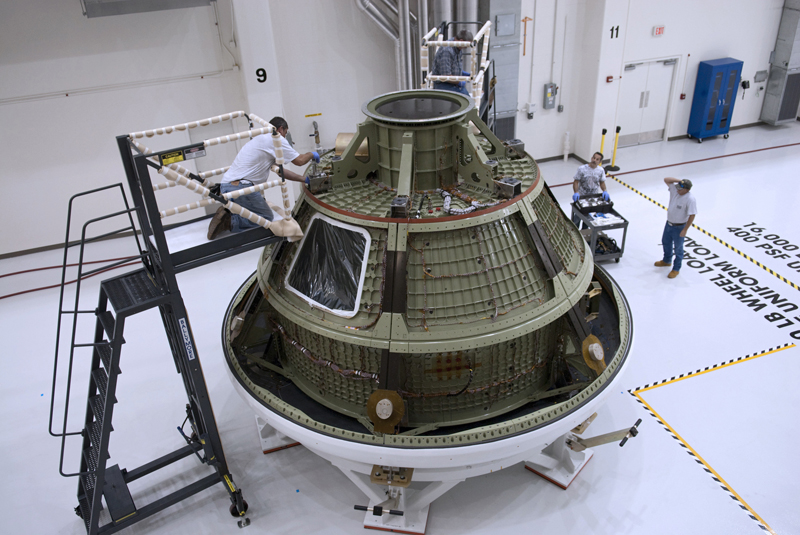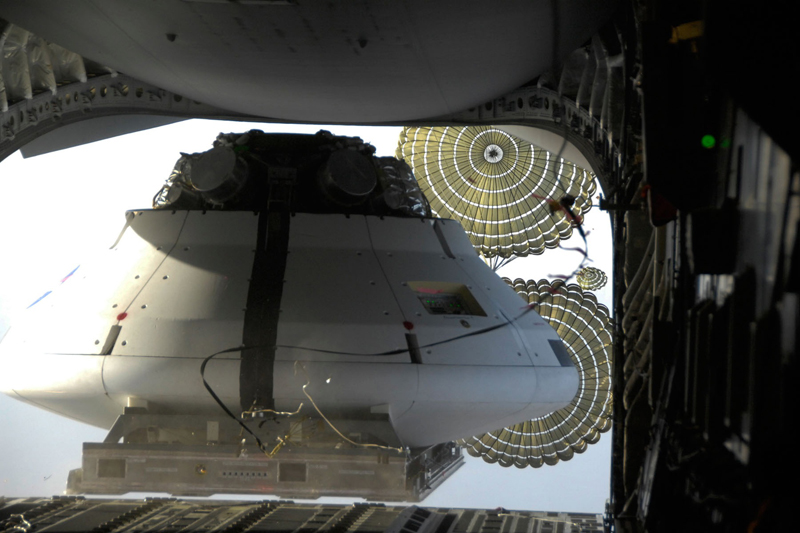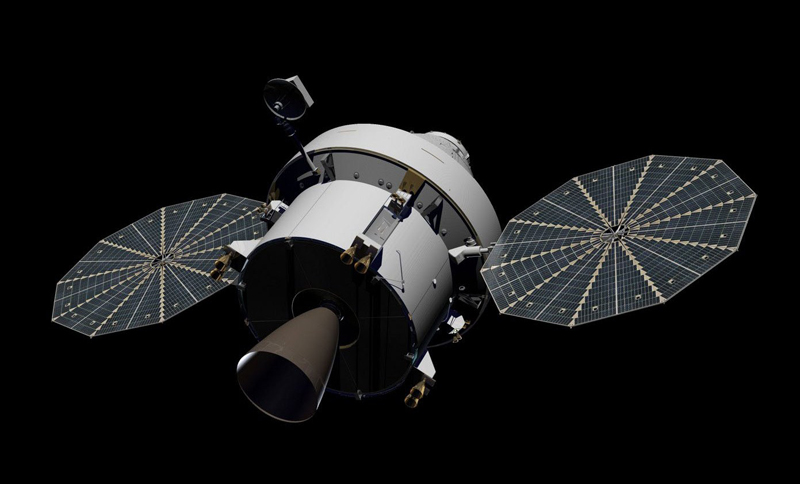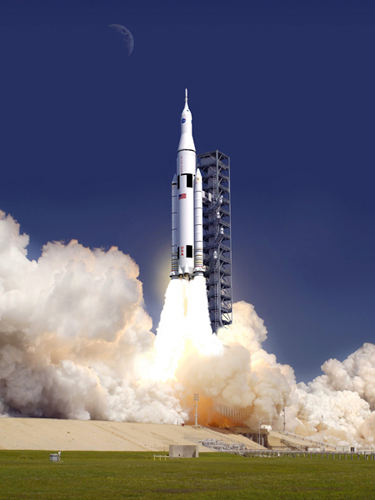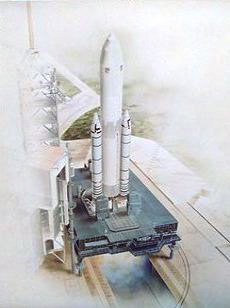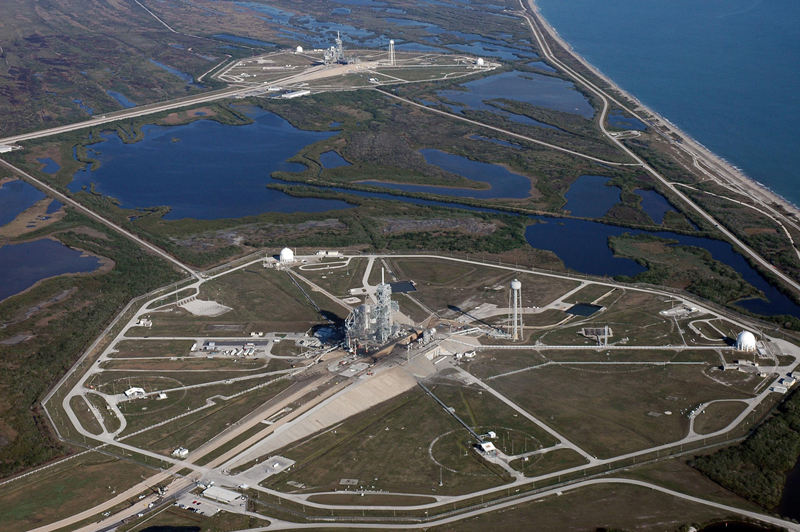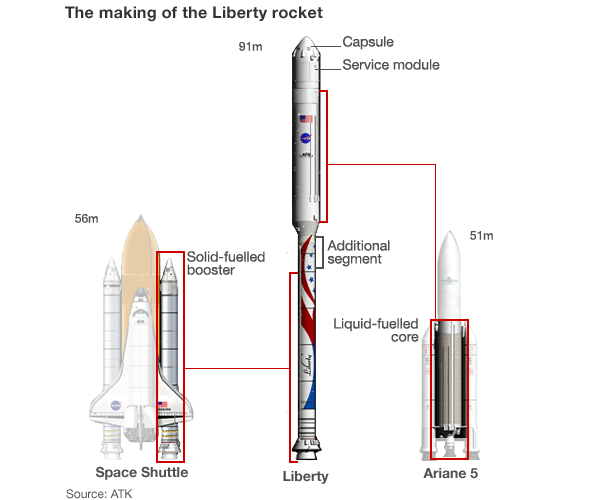Exploration
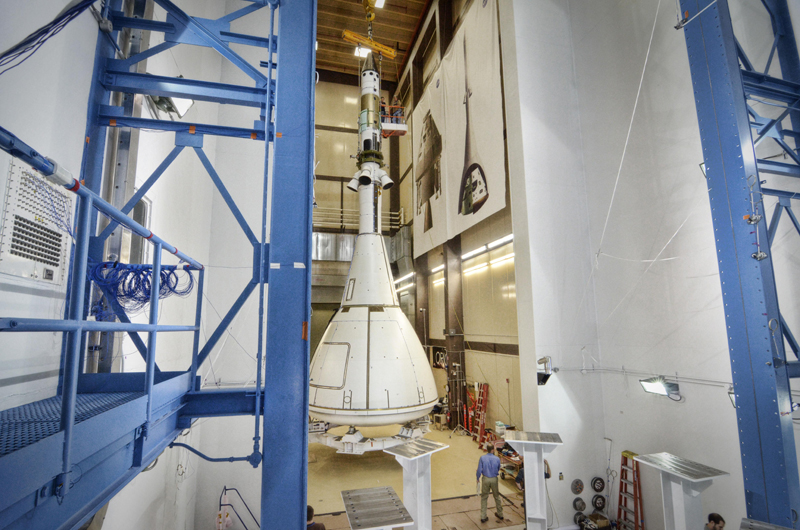
Multi Purpose Crew Vehicles (MPCV)
NASA is working on designs for new spacecraft capable of sending humans to space, Mars and beyond. They would like to make a multi-purpose space vehicle, currently named Orion, which will be able to take 4 humans on 21 day missions.
The Orion MPCV Spacecraft
The "Orion" Multi-Purpose Crew Vehicle (MPCV) is a planned beyond low-earth orbit manned spacecraft. NASA has awarded the contract to build Orion to Lockheed Martin. The MPCV was announced by NASA on 24 May 2011. The first manned mission is expected to take place after 2020.
Orion is projected to carry a crew of four to six astronauts. The Orion Crew and Service Module (CSM) stack consists of two main parts, a conical Crew Module (CM), and a cylindrical Service Module (SM) based substantially on the Apollo Command and Service Modules
The launch system for Orion is presently unclear. The spacecraft was originally designed to be launched by the Ares I launch vehicle which has been cancelled by the Obama administration.
To allow Orion to mate with other vehicles it will be equipped with the NASA Docking System. The spacecraft will feature an "autodock" feature, like those of Russian Progress spacecraft and the European Automated Transfer Vehicle, with provision for the flight crew to take over in an emergency. Another feature will be the partial reusability of the Orion CM. NASA aims to reuse each craft for up to ten flights.

Re-use of NASA Technology and Components
There are many proposals to reuse components from not only the Space Shuttle, but also other retired NASA spacecraft. The Constellation program, which has now been cancelled by the Obama administration, had intended to establish a new platform for space travel, much of which was derived from Space Shuttle technology.
Space Launch System
The Space Launch System (SLS) is a heavy launch vehicle derived from the Space Shuttle that is being designed by NASA. It follows the cancellation of the Constellation Program, and is to replace the retired Space Shuttle. Components of its design include reused Space Shuttle equipment.
Shuttle-Derived Launch Vehicle
The Shuttle-Derived Launch Vehicle (SDV) is a term describing one of a number of concepts that have been developed for creating space launch vehicles from the components, technology and/or infrastructure of the Space Shuttle program. One proposal being discussed includes using a pair of classic 4-segment Solid Rocket Boosters with the Space Shuttle Mail Engines.
Kennedy Space Center Launch Complex 39
NASA deactivated LC-39B on January 1, 2007 and began conversion for the launch of an Ares I-X test flight on October 28, 2009. With the cancellation of the Constellation program the future of the pads remains undetermined and NASA currently plans to strip the pads down to a "clean pad" design for the first time since 1977. As of February 2011, NASA is offering the pad and facilities to private companies to fly missions for the commercial space market.
ATK Liberty Rocket
Liberty is a 2011 launch vehicle concept proposed to NASA by Alliant Techsystems (ATK) and Astrium under phase 2 of the NASA Commercial Crew Development (CCDev) program intended to stimulate development of privately operated crew vehicles to low Earth orbit. The Liberty design uses a combination of hardware from the retired NASA spacecraft. ATK has projected the first launch to take place as early as 2013, with astronauts launching by 2015.
Other Developments
They are also developing technologies that they need for human exploration of our universe, including new electric propulsion and refueling depots in orbit of earth, protecting our astronauts from radiation and reliable life support systems.
← History of NASA Private Sector →Summer on Uranus lasts for 21 years.
